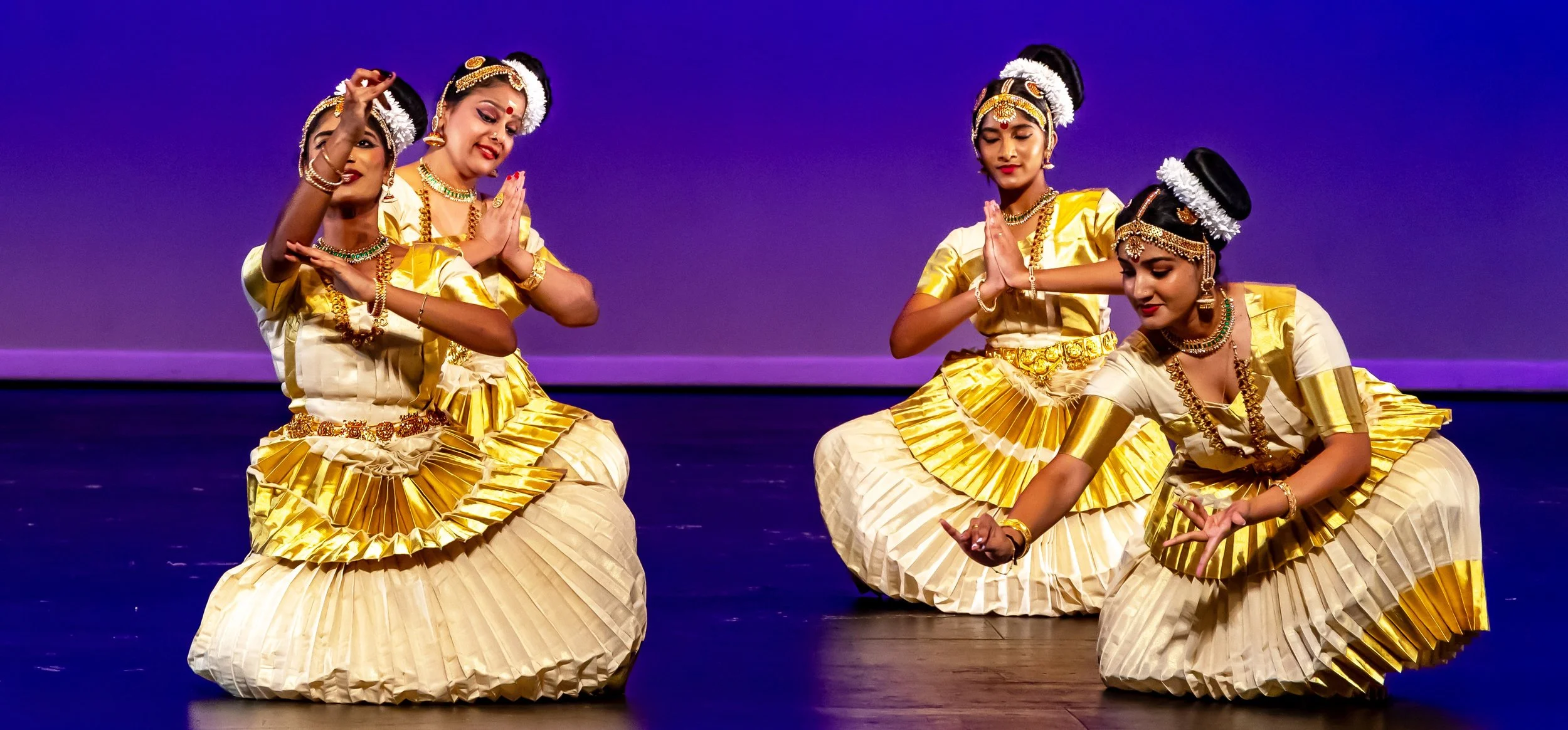
About the Art Form
Mohiniyattam, translated as "dance of the enchantress," is a mesmerizing classical dance form with roots in the southern Indian state of Kerala. Its name draws inspiration from Mohini, the captivating enchantress avatar of Lord Vishnu. Legend has it that Mohini used her feminine wiles to outwit the demon Bhasmasura, saving the universe. This story forms the essence of Mohiniyattam, which beautifully portrays the power of feminine charm.
The history of Mohiniyattam is believed to be intertwined with temple dance traditions. Early performances were likely solo recitals by women known as Devadasis, who were dedicated to serving the temple deities. The 19th century saw a decline in the practice, but thanks to efforts like Vallathol Narayana Menon, Mohiniyattam was revived and given a formal structure. Today, it's a celebrated art form enjoyed worldwide.
Mohiniyattam embodies the Lasya style of Indian classical dance, emphasizing grace and gentle movements. The dance is characterized by swaying hips, elegant footwork, and subtle yet expressive gestures of the hands and eyes. Unlike some other classical forms, Mohiniyattam features minimal jumps or leaps, creating a more fluid and grounded performance. Traditionally performed solo by women, contemporary Mohiniyattam may also involve group presentations.
The repertoire of Mohiniyattam is rich and varied. Performances typically begin with a prayer and an abstract invocation dance. The core of the performance lies in storytelling through dance, often depicting themes of love, devotion, and mythology. Accompanied by the melodious strains of Carnatic music, Mohiniyattam is a captivating display of artistry, capturing the essence of feminine elegance and divine love.
Faculty
Mamatha Muralidharan, Director and Instructor
Curriculum
Coming soon
